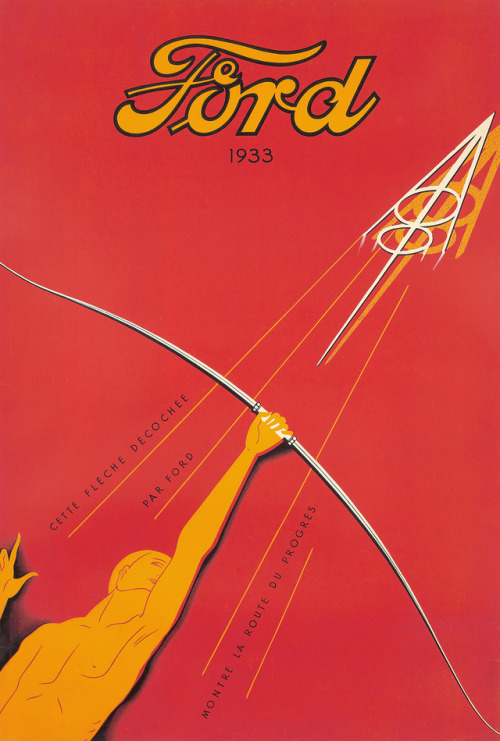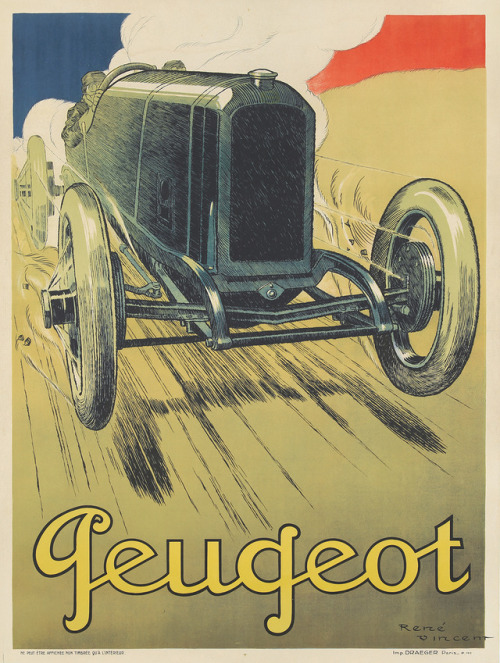#pai-lxxv
Motobécane. ca. 1929. Geo Ham.
46 ¾ x 31 in./118.7 x 78.7 cm
Geo Ham had a need: a need for speed. Known as the “prince of motion,” he is famous today as the illustrator of Monaco Grand Prix posters from 1933 to 1936, as well as motorboat competitions, air meets and aerobatic competitions between the wars. He produced exactly two posters for Motobécane: this one, presumably the earlier of the two: despite the lady’s scarf waving in the breeze, there isn’t quite as much of a kinetic frisson as Ham’s more mature works. The other Ham Motobécane is directly adjacent.
Available at auction June 26. Learn more >>
Post link
Ford. 1933. Anonymous.
30 5/8 x 45 ¾ in./77.8 x 116.2 cm
“Ford introduced the V-8 engine in 1932, and this poster for the following year’s model showcases its promotional message ("Ford lets fly this arrow to show the road of progress”) with a striking Art Deco take on classicism. Ford was the first company to cast a V-8 engine block in one piece. It was many years before the company’s competitors learned how to mass-produce a reliable V-8; in the interim, the car and its powerful engine became the preferred choice of performance-minded motorists worldwide" (Crouse/Deco, p. 46).
Available at auction June 26. Learn more >>
Post link
Peugeot. 1900. Rene Vincent.
46 5/8 x 61 ½ in./118.5 x 156.2 cm
This absolute monster of a chassis, careening out of a Tricoleur sky, bounding along with wheels in the air, is not exactly correct. It appears to be a hybrid of the 1913 and the 1916 Peugeots, which each won the Indianapolis 500: the wishbone front suspension is 1916; the configuration of the chassis, more 1913; but the actual artifacts have a slight upward curve as the hoods reach the steering wheel. Instead, Vincent decided to streamline the car into a totem of power and speed, making the drivers nearly invisible behind the gargantuan engine block. By 1919, Peugeots were among the world’s fastest – in addition to the Indy wins, they broke the world speed records at Brooklands in England, and took the French Grand Prix as well. These roadsters weren’t the average consumer’s Peugeot, but that wasn’t the point for Vincent. Blasting a future driver with the force of speed, power, and Frenchness? Definitely.
Post link



